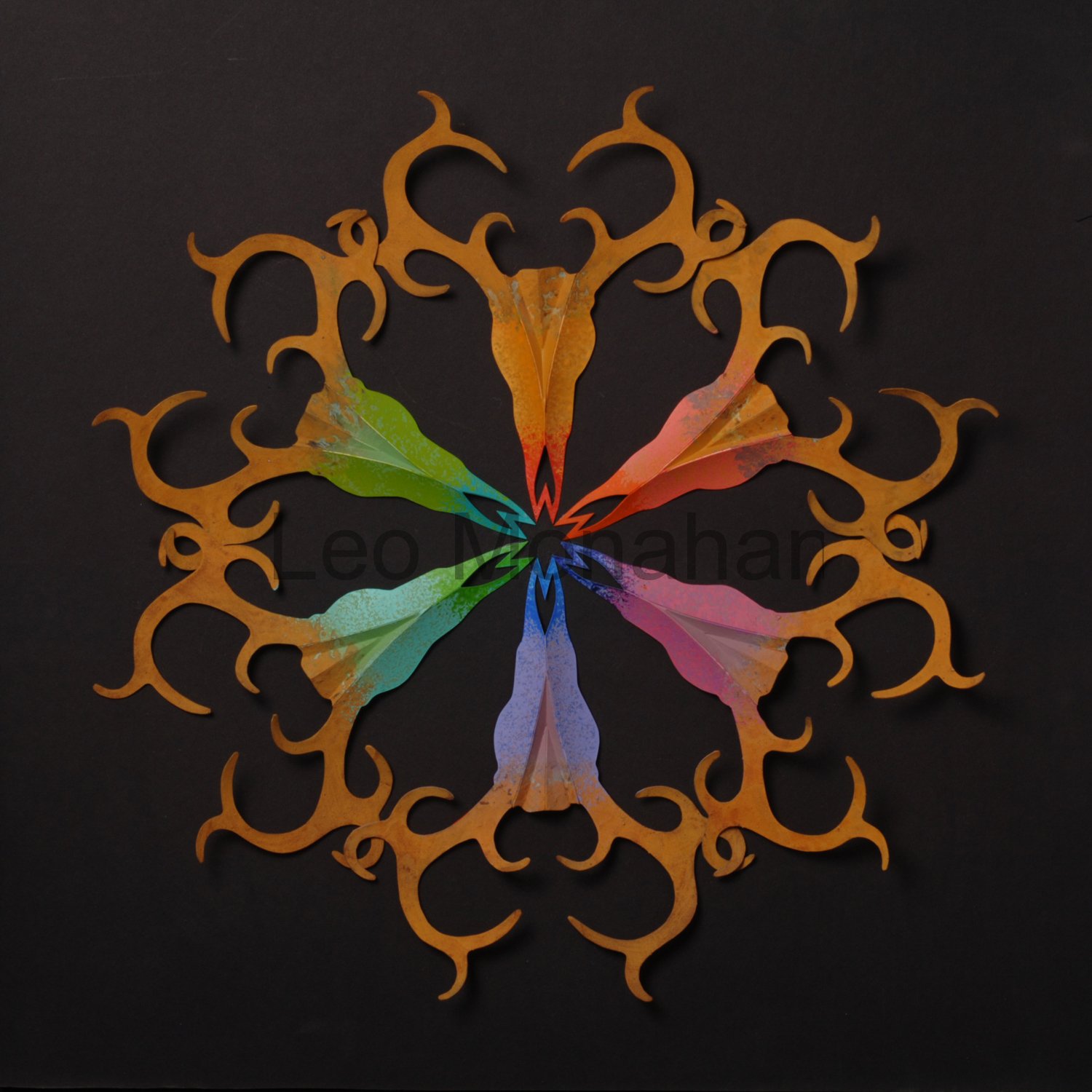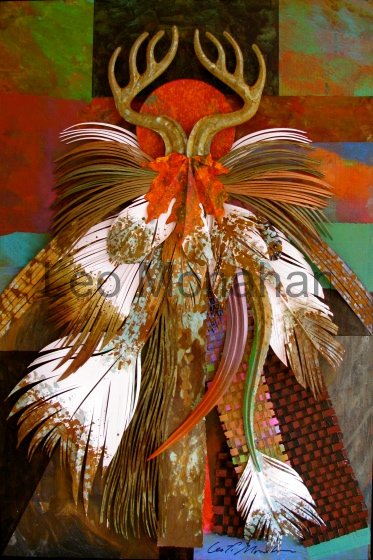Dear Reader,
As an illustrator, I did many fish, and fishing-related assignments. I have a series of horned and antlered fish underway, hopefully enough for a thin slice of baloney we know as the humorous fishing gift book. I searched through my color wheel images and nothing seemed to fit this category, so I cut this new one. It isn’t a traditional wheel, but it seemed like a cool idea to me.
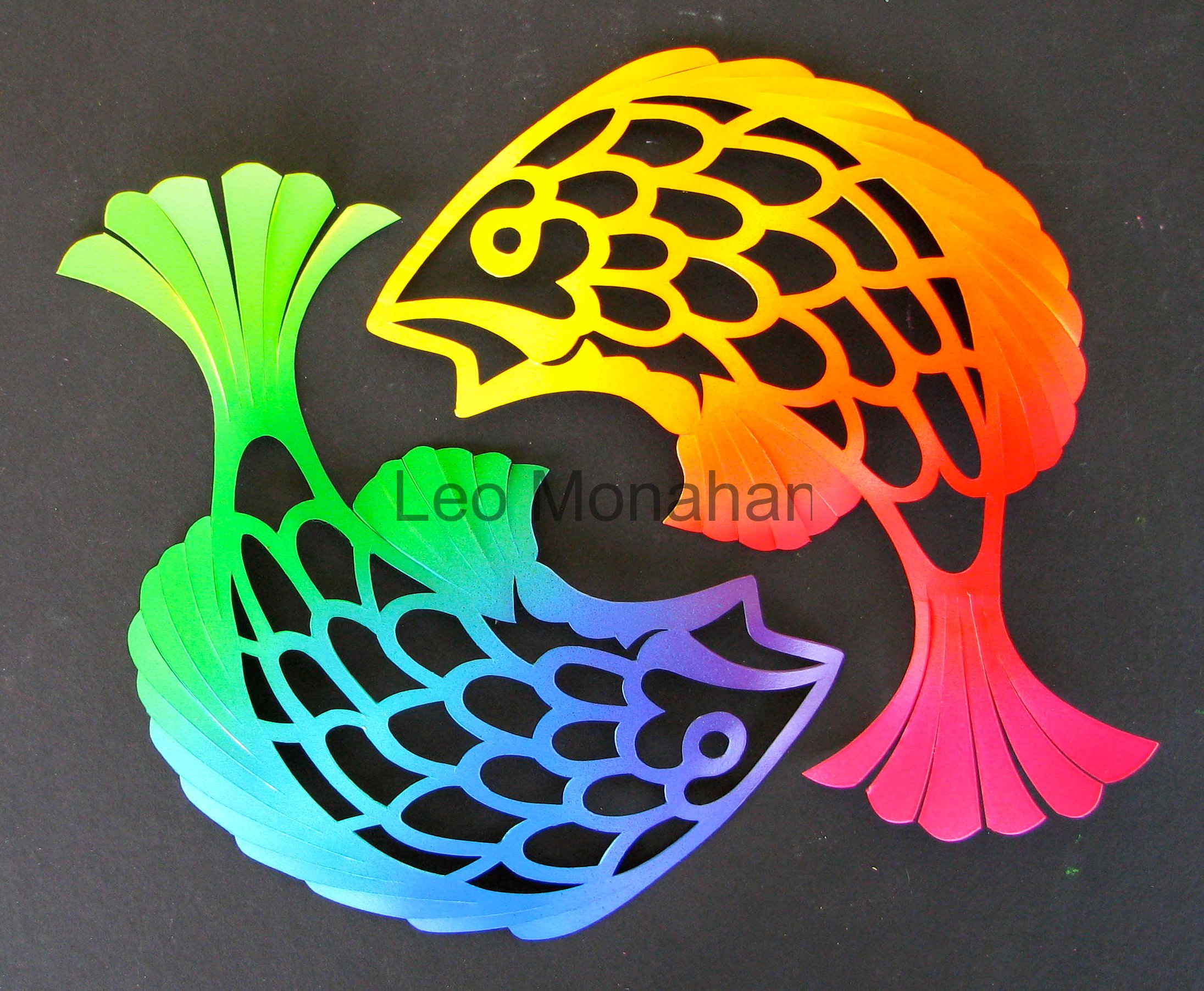
This “spinning fish” image (took awhile to cut the damn thing) gave me the opportunity to paint the full spectrum with one fish in warm hues and the other in cool. The colors start at the top fish with yellow and go through yellow orange, orange, red orange, red, and red violet. That last color transitions into the tail of the second fish, which starts as violet, then goes to blue violet, blue, blue green, green, and yellow green. That last color transitions into the yellow of the first fish. Skeletal and scale structure simplify the image.
In the late 80’s I began making paper sculpture fishing flies. I showed the first one at the Peppertree Art Show in the Santa Ynez Valley in California. It was 30 x 40” with three flies, each about 30” long. Big, big, really big flies.
The show was Western Americana. One old guy didn’t think that the flies were Western art and kept coming by, scowling and muttering. It wasn’t a cowboy with a horse and dog near a campfire, so it just wasn’t art.
He came up and snarled, “What kind of fish do you catch with those?” I didn’t miss a beat and replied, “Suckers!” I just couldn’t help myself. He loved the humor, but he still didn’t like the art.
Several years ago, the Museum of Idaho asked if I could make 30 flies, in 60 days, for an outdoor sports exhibition. No. Not just no, but absolutely NO! Then make as many as you can, they said, and in 60 days I made 20 flies and wrote 20 traditional, 17-syllable haiku poems to go with them. I’ve been writing haiku for about 45 years. Here are two of the flies with the poems:
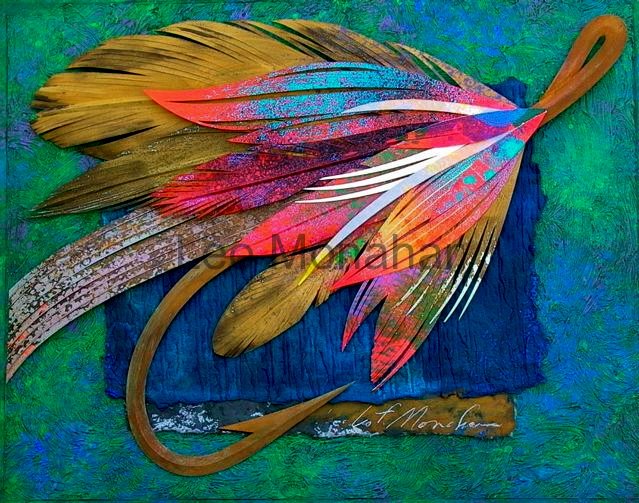
Riffles and ripples
Clear creek cradles dancing leaf.
Good fishing, no bites.
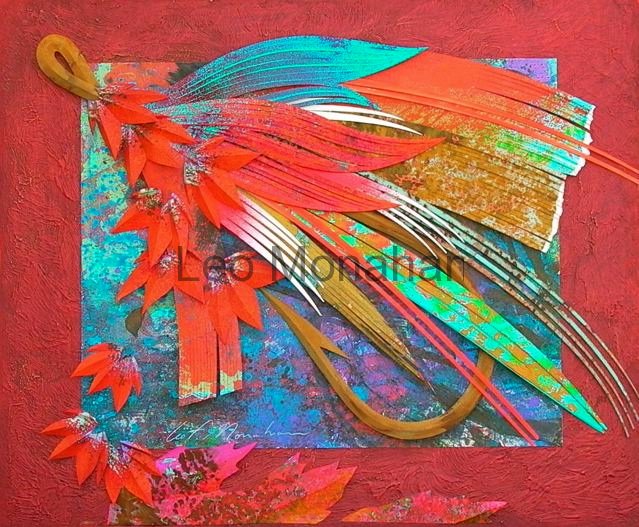
Trout awake hung
And hear the glacier move.
Unlucky May fly.
These flies weren’t made for this blog, so the color analysis is after the fact.The top fly is made up of hot reds, pinks, yellow and rust, with a small amount of blues as subordinate accents. Those accents harmonize with the background’s variation of blues and greens, from dark to medium value and from intense (bright) to neutral shades.
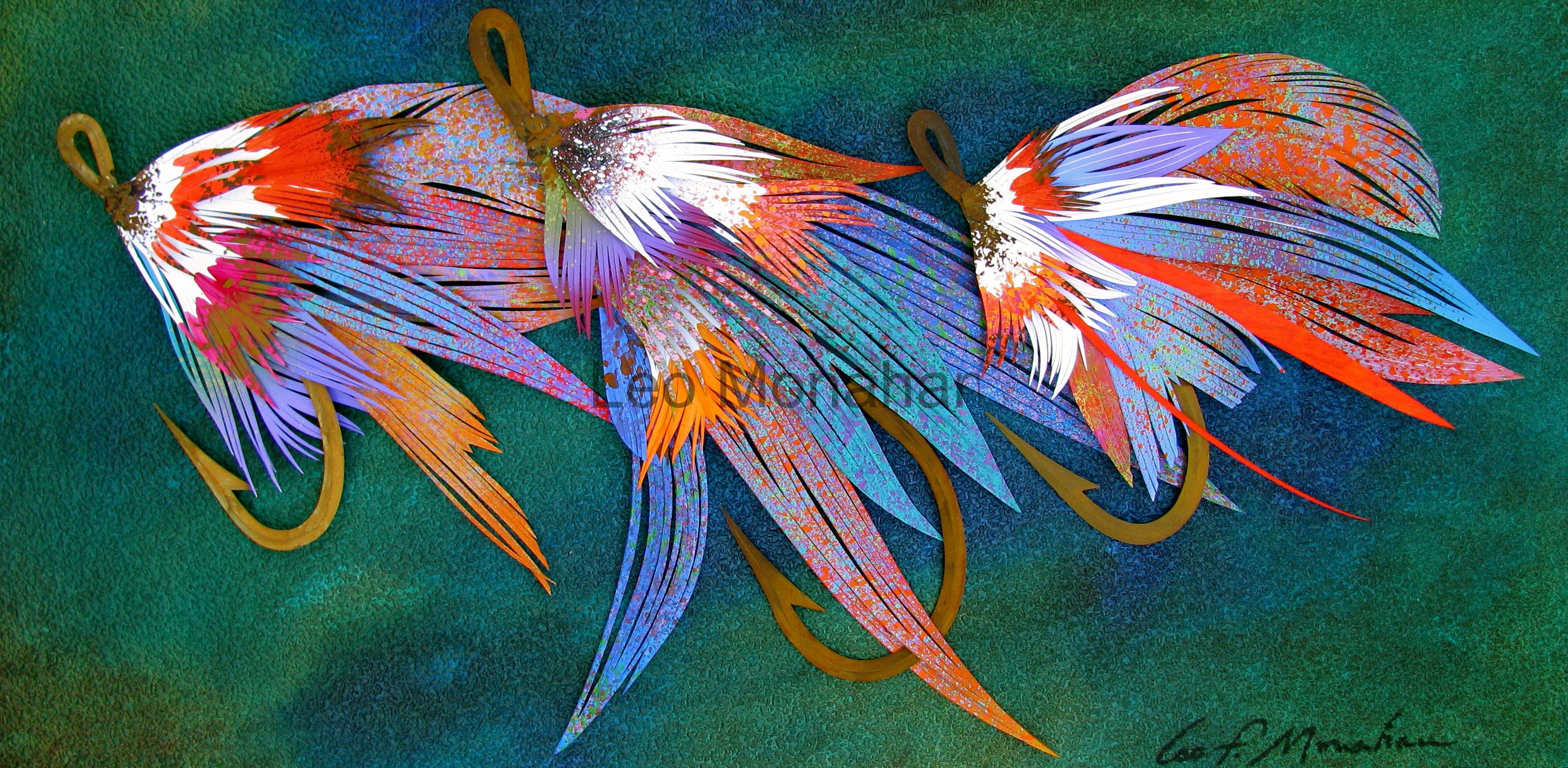
Snow months I tie flies
I dream about them at night.
Three left on my hat.
On a mottled neutral green background, I staged three similar flies with blue as the dominant hue and hot reds and white, in subordinate proportions, as the accents. This piece is 20 x 40.” My flies are abstract art with a hook on it. Everything is cut from white paper, even the hooks, and painted and assembled.
Oddly enough, my best customers for the flies are women, who buy them for their
fly-fishing husbands or boyfriends. That way they don’t get something the guys already have, or buy the wrong thing. When you gift fly-fishing gear, too often you hear, “What in hell did you buy that thing for?” Play it safe, select one of my flies. They’re probably cheaper than anything in fly-fishing stores.
In 1937, we were in the depths of the Great Depression. I was going to be five in two weeks. The family was spending Christmas with my grandparents and my Uncle Bud and Aunt Alberta, in Keystone, near Mount Rushmore. Money was scarce and so were the gifts. Uncle Bud was a fly-fisher, and there was a trout stream running through their back yard. Aunt Alberta traded house cleaning for six hand-tied flies from a neighbor down the crick.
She laid them on a cotton pad in a small box, which she gift-wrapped, and lovingly gave to Uncle Bud. He was delighted to say the least, and he showed them to me and said that they were for fish. Later in the day, he was looking for the flies and asked me if I had seen them. I said that I had given them to the fish. He asked what I meant. I told him that I had gone out on the foot-bridge, and tossed them into the crick, one at a time. I was his only nephew so he didn’t kill me. But I kept out of Alberta’s way for a while.
Thanks for visiting me…
leo
“Spinning Fish,” a color wheel, is available at $1,000. 20 x 20”
“Triple Flies” is available at $3,000. 20 x 40” (plexiglas shadow box)
Other flies are available. Thanks for your interest.
I am in the Weaverville Art Safari open studios tour on May 12 & 13.
See the website at http://weavervilleartsafari.com/ for information.

